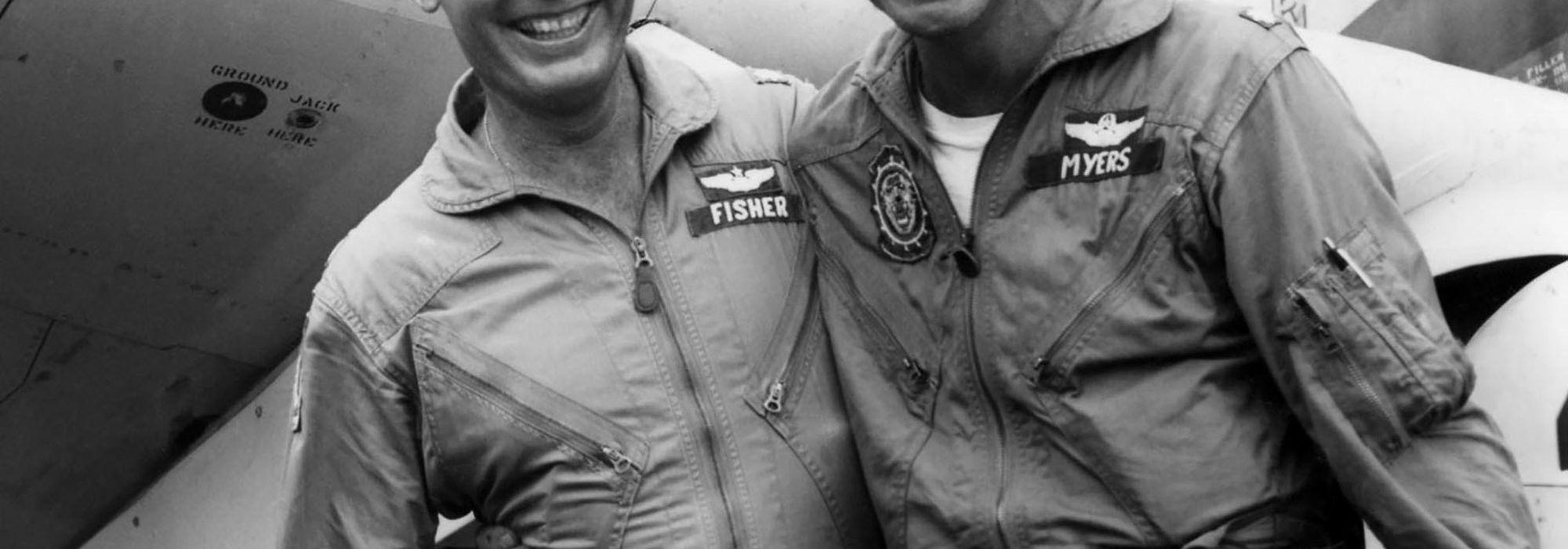Bernard Fisher landed his A-1E on the embattled runway to bring out Jump Myers.
The US special forces camp in the A Shau Valley was a constant problem for North Vietnam. It was two miles from Laos, enabling the garrison to impede traffic on the Ho Chi Minh Trail on the other side of the border. It also lay astride the infiltration route toward Hue and Da Nang.
In 1966, the North Vietnamese Army decided to put the camp out of business and brought a fresh regiment down the Trail to join the NVA division already operating in the area.
The camp was of rough construction, with a barracks, a fort, and an airstrip of pierced steel planking just outside the barbed wire perimeter. High hills rose up on both sides of the valley. Everything, including food and ammunition, came by air. The only real defense was air support. Strength of the camp was 17 US Green Berets and 368 South Vietnamese irregulars and Chinese Nung mercenaries.
The attack was begun on March 9, 1966, by a force of 2,000 NVA regulars. Clouds and low-lying fog concealed 20 antiaircraft guns firing from the hills. An Air Force AC-47 gunship flew up the valley at treetop level, strafing the attackers, but it was shot down on the second pass and crashed.
Two A-1E attack aircraft from Pleiku were diverted from other targets and sent to the aid of the fort. The two-seat, single-engine A-1E was propeller-driven but still effective in ground attack.
Leading the A-1E flight was Maj. Bernard F. Fisher, 39, an F-104 fighter pilot until assigned to the Air Commandos in Vietnam. Fisher, a devout Mormon, did not drink, smoke, or use strong language but he was held in high esteem in a squadron of men who did all three.
For the next several hours, Fisher and his wingman collected arriving aircraft, including bombers and transports, above the clouds and led them down the valley. They also suppressed ground fire and broke up the NVA forces massing to attack the fort. Fisher was awarded the Silver Star for the day’s work, but there was more to come.
The attack intensified during the night and the defenders reported they could not hold out much longer without help. Half a dozen A-1 pilots, including Fisher and an old friend, Maj. Dafford W. “Jump” Myers, responded. The cloud ceiling was at 800 feet, providing cover for enemy gunners on the hills. “It was like flying inside Yankee Stadium with the people in the bleachers firing at you with machine guns,” one pilot said.
Meyer’s A-1 was hit hard and went down. The fuel tank exploded on contact with the ground and the aircraft skidded along the runway and blew up. The airstrip was cratered, smoke everywhere, and littered with debris. There were torn shards of pierced steel planking that could rip airplane tires to shreds. Miraculously, Myers was not seriously injured. The next available rescue helicopter was at least 20 minutes away.
There was never any doubt: Fisher would go in to get Myers. He touched down at the far end of the field, veered through the smoke and hazards, and detoured across a grassy area toward the burning A-1. Myers bolted out of the ditch where he had taken cover and ran alongside the airplane with bullets skipping at his heels.
Fisher stopped, helped Myers aboard, released the brakes, and poured on the power, gaining speed to lift off and climb out of the valley. Defenders in the fort cheered as Fisher’s A-1 roared down the strip and rose into the air.
The camp fell to the NVA that afternoon, but air strikes subdued the attack enough for rescue helicopters to pick up survivors. The Green Berets took 100 percent casualties, five killed, 12 wounded. Only 172 of the South Vietnamese and Chinese mercenaries got out. Without air power, there would have been no survivors. The NVA paid for its victory with 800 troops lost.
Fisher was awarded the Medal of Honor, the first Airman in the Vietnam War to receive it. He remained in the Air Force, retiring as a colonel in 1974. After retirement, he went back home to Idaho and became a farmer, raising seed corn, sugar beets, wheat, and alfalfa.
